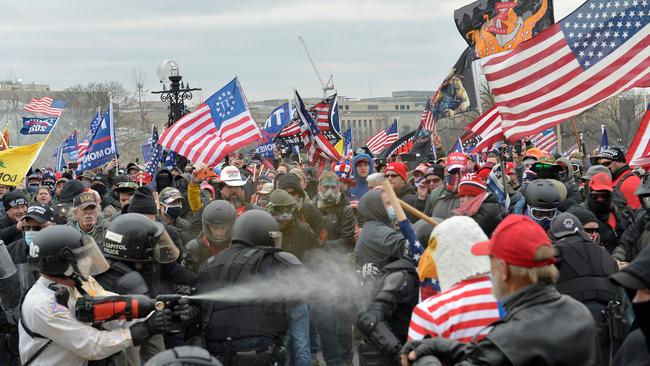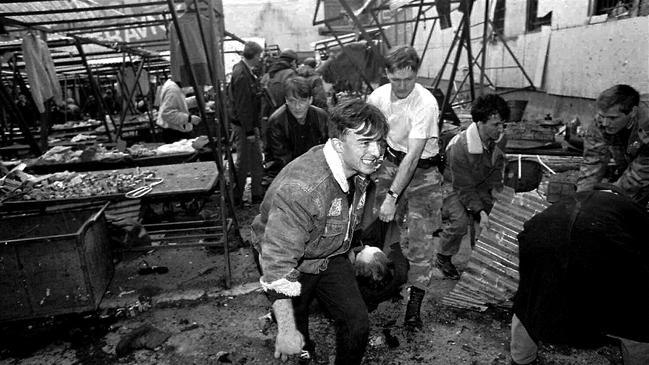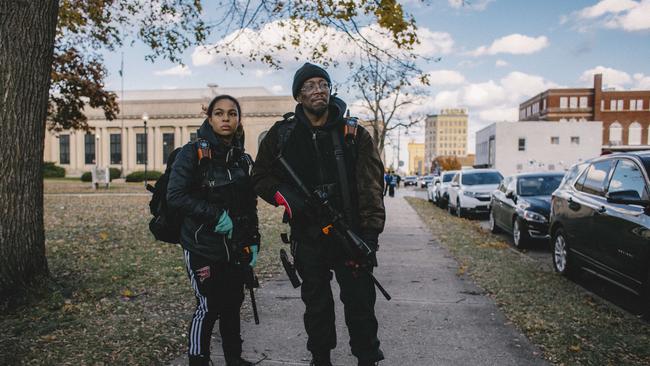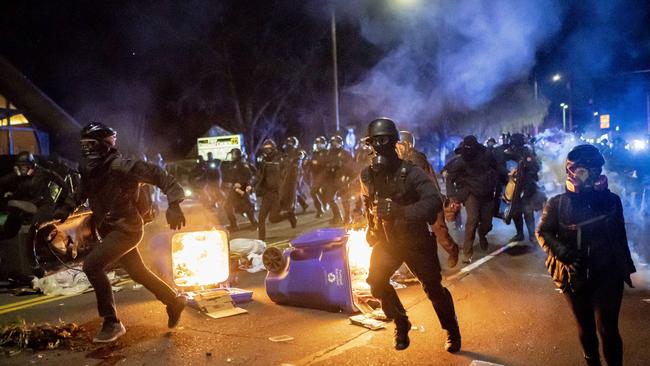Is America’s second civil war brewing? All the signs are all there
The Balkans conflict gives an ominous glimpse of potential future strife in the US. A democracy founded more than two centuries ago, has entered very dangerous territory.

It turns out that there is a discipline that you might call “civilwarology” – the study of the factors that lead to civil war. It exists in think tanks and universities, and its experts are consulted by state agencies anxious to better understand the world in which they operate.
Barbara F. Walter became a civilwarologist nearly a quarter of a century ago and her entry is evidently well thumbed in the Rolodexes of the CIA and the US State Department.
In other words, she knows what she’s talking about – which makes this book rather scary.
The discipline is based on observation and measurement over time. Out of these have emerged a series of data sets and analytical tools relating to the progression towards or away from the conditions likely to lead to civil war. And it adds a word to the list of possible-ocracies.
Anocracy, disappointingly, is not government by assholes, but a troubling middle point between democracy and autocracy. An anocracy may exist during the transition from authoritarianism to full democracy, or the other way round, but it is less stable than either. Right now some states that lay claim to being democracies are in fact anocracies.
If anocracy is a key precondition for the outbreak of a civil war, “factionalisation”, Walter says, is another. Not to be confused with polarisation, this is “when citizens form groups based on ethnic, religious or geographic distinctions – and a country’s political parties become predatory, cutting out rivals and enacting policies that primarily benefit them and their constituents”. Winner takes all. Or loser loses all.
The postwar conflict that features most prominently in this book happened in the territories that had once been Yugoslavia. For 35 years the communist autocrat Marshal Tito had suppressed any latent ethnic rivalry between a series of closely related peoples. When he died in 1980 this settlement died with him.
As the component republics of the old state began to agitate for more autonomy, one group – the Serbs – saw themselves as losing out. This sense of loss on the part of a large group, Walter says, is a significant element in creating the conditions for war.
She reminds us that the election of Abraham Lincoln as US president in 1860 meant slaveholding Southern states no longer exercised a veto on federal policy; the other states could outvote them.
In Yugoslavia the new anocracy opened the way for what experts call “ethnic entrepreneurs” – a breed of politician that mobilises around ethnic grievances or anxieties. These included most notably Slobodan Milosevic in Serbia, Franjo Tudjman in Croatia and Radovan Karadzic for the Bosnian Serbs.
At a more local level ethnic politics became exploited by “violence entrepreneurs” – the men who formed and armed militias to take control and to kill their enemies. These militias do not need to be large. In the town of Visegrad one man with 15 gang and family members carried out a local genocide of Bosnian Muslims.

A common dimension in civil war development, Walter tells us, is a rural/urban divide, in which resentful “sons of the soil”, organising away from the supervision of the authorities, see themselves at cultural war with the more cosmopolitan town-dwellers. In Bosnia this was embodied in the bloody four-year siege of Sarajevo, with the Serb hicks from the hills mortaring and sniping the occupants of the city.
One of Walter’s reasons for reminding us of the horrors of the former Yugoslavia is to point out that to the population of these lands, civil war had never seemed likely until it happened and suddenly, one day, their good neighbours turned into their executioners.
And here we come to the nub of it. The title of the book is misleading. It isn’t really about civil wars generically, but about one conceivable conflict in particular: the Second American Civil War. Roughly at the halfway point, having established how fratricidal conflict occurs, Walter turns her attention fully to her own country. Naturally, she knows how absurd such a possibility will seem to many readers as they take the subway to their downtown offices or listen to the audiobook as they drive the children to school.
“No one wants to believe,” she writes, “that their beloved democracy is in decline, or headed toward war; the decay is often so incremental that people often fail to notice it or understand it, even as they’re experiencing it.”
Yet objectively the danger signs are there. So that “if you were an analyst in a foreign country looking at events in America – the same way you’d look at events in Ukraine or the Ivory Coast or Venezuela – you would go down a checklist, assessing each of the conditions that make civil war likely. And what you would find is that the United States, a democracy founded more than two centuries ago, has entered very dangerous territory.”
My psychological disposition inclines me against claims such as these. In the Great Journalistic Division between the hysterics and the phlegmatists, I tend to side with the latter. But happenings in the US since 2016 – and especially the events of the past two years – have shaken my complacency.
There has been the loss of conventional politics from much of the national discourse, so that sharp political difference no longer concerns taxes or the environment, but (for one side at least) is almost entirely about ethnicity, identity, culture and loss. The Kyle Rittenhouse court case arose from armed men stalking the ungoverned streets shooting at each other in pursuit of political, not criminal objectives. Militias line statehouse steps openly carrying weapons of civil war lethality.

Then there was January 6, 2021, and the storming of the Capitol, in which political thugs sought to prevent the accession of a democratically elected president. Even more alarming than the mere fact of this act of what the CIA classified as “open insurgency” has been the way the Republican Party and its supporters have minimised this attempt at insurrection.
Walter shows how developments in the US match the conditions for other civil wars.
The sense of loss among many white-identifying voters (the US as a whole will follow where California and Texas have led by becoming minority white by 2045), the rural-urban divide, a failure of trust in politicians and other citizens, the factionalisation of politics, the rise of grievance-exploiting “ethnic entrepreneurs” (in this case most obviously Donald Trump), and all of this hugely exacerbated by the catalyst of that great creator of anxiety, social media.

The psychological fuel for civil war, Walter reminds us, is not hate, but fear. Between January and October 2020 a record 17 million firearms were sold in the US. In December 2020 one poll showed that 17 per cent of respondents agreed with the statement: “A group of Satan-worshipping elites who run a child sex ring are trying to control our politics.”
Walter admits that in light of all this she and her husband, children of European migrants to the US, considered leaving the US last year. A useful rule of thumb could be that when your experts on civil strife start moving abroad you may be in trouble.
Yet for all that, Walter is not fatalistic. If the forces of division have a playbook, then, she writes, “we have a playbook too”. She advocates better civics lessons in schools, prosecuting armed militias as terrorists, reform of what is a terribly inefficient and patchwork voting system, tech regulation and much greater attention to developing policies that benefit the majority of citizens. The threat can be averted. To which the watching Brit, otherwise powerless, can only whisper a heartfelt: “Amen.”
How Civil Wars Start – And How to Stop Them

To join the conversation, please log in. Don't have an account? Register
Join the conversation, you are commenting as Logout